The AMD 2nd Gen Ryzen Deep Dive: The 2700X, 2700, 2600X, and 2600 Tested
by Ian Cutress on April 19, 2018 9:00 AM ESTNew X470 Chipset and Motherboards
A Focus on Power
For our reviews, AMD shipped us two motherboards: the ASUS ROG Crosshair VII Hero (Wi-Fi) and the MSI X470 Gaming M7 AC. These will be two of the high-end halo motherboards to focus on the new X470 chipset.

Katamari loves motherboards. Or just loves sitting on my review samples. (ed: it's the latter)
The new X470 chipset is designed to sit above the X370 chipset, although looking at the specifications, users might be forgiven for not seeing a difference. Technically the X470 part has identical PCIe and SATA support to the older X370 chipset, and for a while AMD will be running both chipsets concurrently for the main motherboard manufacturers to use. Both sets of boards will be using the AM4 chipset, which AMD has guaranteed to support for several generations now.
| AMD AM4 Chipsets AnandTech |
|||||||||||||
| DDR4 | OC | USB | SATA | PCIe 2.0 |
GPU | XFR2 PB2 |
StoreMI | TDP | RAID SATA |
RAID NVMe |
|||
| 3.1 | 3.0 | 2.0 | |||||||||||
| X470 | 2933 | Y | 2 | 6 | 6 | 6 | 8 | x8/x8 | Y | Y | 4.8W | 0,1,10 | |
| X370 | 2667 | Y | 2 | 6 | 6 | 6 | 8 | x8/x8 | N | N | 6.8W | 0,1,10 | |
| B350 | 2667 | Y | 2 | 2 | 6 | 4 | 6 | x16 | N | N | 6.8W | 0,1,10 | |
| A320 | 2667 | N | 1 | 2 | 6 | 4 | 4 | x16 | N | N | 6.8W | 0,1,10 | - |
| Embedded | |||||||||||||
| X300 | 2667 | Y | 0 | 4 | 0 | 2 | 4 | x8/x8 | N | N | ? | 0,1 | - |
| B300 | 2667 | N | 0 | 4 | 0 | 2 | 4 | x16 | N | N | ? | 0,1 | - |
| A300 | 2667 | N | 0 | 4 | 0 | 2 | 4 | x16 | N | N | ? | 0,1 | - |
The big change in the chipset will be in the power consumption. Currently the X370 chipset, built on a 55nm manufacturing process using ASMedia IP, runs at a 6.8W TDP (running at full load). For X470, we were told that this is the same process and IP, but the chip will now run at 4.8W peak and 1.9W in an idle mode. This is due to an improved power infrastructure within the chip, and AMD also claims that overall throughput is improved. The chipset firmware is also set to provide better memory OC support and stability.
The other factor in this is StoreMI, on the next page. This new feature technically does not require chipset support, however the free installer will check for the presence of an X470 chipset before providing a free license, otherwise the software will cost $20 and not have AMD branding.
All X470 boards, and X370 boards with the latest BIOS updates, will support the new Ryzen 2nd Gen processors. X370 motherboards that have had the BIOS updated already will have the ‘Ryzen 2000 Desktop Ready’ logo attached on the box, however X470 boards will automatically be covered.
AMD Boot Kits
For users in that buy an X370/B350/A320 motherboard that has old firmware, AMD has a support page to manage the issue. Users should first reach out to the retailer for a replacement board with an updated BIOS, but failing that, users with verified purchases can obtain an “AMD Boot Kit” – a short term loan of an A-series processor with which people can update the BIOS for their new processor.
AMD will supply the kit, free of charge, if the user can:
- Show a picture of the new 300-series motherboard,
- Show a picture of the new Ryzen 2000-series CPU,
- With model numbers / unique serial numbers in shot, and
- A copy of the purchase invoice.
This means that users who want to take advantage of the Boot Kit will have to buy retail components, and buy them second hand. The kit will have an A-series (Bristol Ridge) processor and a cooler, as well as a pre-paid return label for the hardware. Offering a kit like this for a motherboard BIOS update is relatively unheard of, as previously users would have to go through the retailer and pay for an RMA. However, one might suggest that AMD has enough A-series processors in stock for this to not be much of an issue, and the positive reaction from such a service outweighs the sending and return costs.
Users that need a Boot Kit can go to this link to find the official details.
X470 Motherboards
Each manufacturer has already announced a handful of new motherboards for the chipset, although it is clear this is not a full stack.
| X470 Motherboards | |||
| Name | Size | Price Amazon | Price Newegg |
| ASRock | |||
| X470 Master SLI/AC | ATX | - | $150 |
| X470 Gaming K4 | ATX | - | $170 |
| X470 Gaming-ITX/ac | Mini-ITX | - | $180 |
| X470 Taichi | ATX | - | $230 |
| X470 Taichi Ultimate | ATX | - | $300 |
| X470 Master SLI | ATX | - | - |
| ASUS | |||
| TUF X470-Plus Gaming | ATX | $160 | $160 |
| Prime X470-Pro | ATX | - | $185 |
| Strix X470-F Gaming | ATX | - | $215 |
| Strix X470-I Gaming (Wi-Fi) | Mini-ITX | $210 | $210 |
| X470 Crosshair VII Hero | ATX | $280 | $280 |
| X470 Crosshair VII Hero Wi-Fi | ATX | $300 | $300 |
| Biostar | |||
| X470GT8 | ATX | - | - |
| X470GTN | Mini-ITX | - | - |
| GIGABYTE | |||
| X470 Aorus Ultra Gaming | ATX | $140 | $140 |
| X470 Aorus Gaming 5 Wi-Fi | ATX | $180 | $180 |
| X470 Aorus Gaming 7 Wi-Fi | ATX | $240 | $240 |
| MSI | |||
| X470 Gaming Plus | ATX | - | $140 |
| X470 Gaming Pro | ATX | $170 | - |
| X470 Gaming Pro Carbon | ATX | - | $190 |
| X470 Gaming M7 AC | ATX | $260 | $260 |
| X470 Pro Carbon AC | ATX | - | - |
Most vendors will run the X470 and X370 chipsets side by side, with the X470 taking up some of the more premium offerings at this time.
ASUS ROG Crosshair VII Hero
The first board we opened was the ASUS ROG Crosshair VII Hero (Wi-Fi), with the box well and truly battered either by shipping or how it was stored.
At first glance we already see a few notable features: a combined 12-phase power delivery (likely 10+2) on the CPU, with dual M.2 slots and reinforced PCIe for x8/x8 SLI operation. The rear IO panel is pre-attached to the system with the shroud, and there is a small cable connecting the integrated LEDs on the motherboard.
The socket is the same as before: AM4 with 1331 holes for the processor. The latch mechanism is the same, as are the cooler dimensions.
ASUS has added a number of RGB headers on the board, as well as what looks like easy-to-use voltage read points or points to enable any 5V operation (such as cold-cathode lighting?).
With the two M.2 sockets, one will be PCIe 3.0 x4 from the CPU and the other is PCIe 2.0 x4 from the chipset. For other storage needs, there are six SATA ports as well.
Onboard are a variety of USB 3.1, USB 3.0, and USB 2.0 ports and headers, although I found it quite amusing that ASUS decided to put ‘native USB’ on this header to signify that it is from the chipset and not from a controller. This has benefits for VR that requires native ports, allowing the user to put front panel connectors into the native USB headers.
Being a halo board, ASUS has put in its SupremeFX audio configuration. This is based on a custom Realtek ALC1220A codec, Nichicon audio capacitors, an EMI shield, PCB separation, and bundled software.
On the back we get ASUS BIOS Flashback button, such that users can upgrade the BIOS without the CPU/GPU/DRAM installed, a Clear CMOS button, the 802.11ac Wi-Fi, two USB 2.0 ports, a combination PS/2 port, eight USB 3.0 ports, two USB 3.1 ports (one Type-C), the gigabit Ethernet port, and the audio jacks.
MSI X470 Gaming M7 AC
By contrast, the MSI X470 Gaming M7 AC box was not bashed up, and showed the picture of the motherboard directly on the front. Normally we are used to seeing MSI and the ‘ACK’ moniker on some of its Gaming M7 motherboards with Wi-Fi, to indicate using a Killer network controller, but not here.
The first look at the board shows something a little less heavy on the styling than the ASUS, although MSI is still pushing a bit of an angled look. The obvious features are the DRAM supports, the multitude of chokes in the power delivery, and that dual-fingered chipset heatsink which hides two M.2 slots.
A close up of the DRAM ‘cover’ shows that this is how MSI is evolving its reinforced memory slot concept. We can argue if reinforcing memory slots is actually worth anything (it certainly helps PCIe), but here it can contribute to the aesthetic.
I’m counting 14 chokes on this motherboard, which would make it one of the biggest power delivery options on any AM4 motherboard. The power delivery heatsinks are not connected together, perhaps indicative of cost or MSI’s confidence in the power delivery efficiency. It is worth noting that MSI uses dual 8-pin power for the CPU here, compared to the 8+4-pin arrangement on the ASUS ROG.
One of the more esoteric features of recent MSI motherboards is this big knob, which goes all the way up to 11. This is MSI’s Game Boost overclocking feature, designed such that each twist gives a bigger overclock boost to the processor. In the past these features are often overly harsh to most processors, in an effort to encapsulate as many as possible, and in the past we’ve never been able to go much beyond the ‘2’ setting on air cooling. Luckily there are power/reset buttons right next to it.
MSI’s Audio Boost 6 branding for the audio is almost like the others: a Realtek ALC1220 codec with specialized audio capacitors, an EMI shield, and PCB separation. MSI’s add here is in the software, using a license from a company called Nahimic to offer various EQ adjustments and in-game benefits.
Like the ASUS, MSI offers a BIOS update feature without the CPU/GPU/DRAM installed. On the rest of the rear panel we get two USB 2.0 ports, a combination PS/2 port, four USB 3.0 ports, the 802.11ac Wi-Fi module, two USB 3.1 ports, the gigabit Ethernet port, and the audio jacks.
A couple of interesting things to note on the rear of the board - around the chipset heatsink area, MSI has placed this warning about keeping case standoffs away from the bottom of the board. Because most cases are designed to house all sorts of motherboard form factors, users that take older cases and do not remove the unneeded standoffs can result in short circuits and possibly ruined hardware. Although if a user doesn’t remove the older standoffs, I doubt they will bother reading the rear of the motherboard.
Here’s a handy addition to some motherboards: this tells you how many PCB layers there are. In this case, six. To put that into context, the cheapest motherboards usually have three or four, most mainstream boards will have six or sometimes eight, while high-end desktop usually require eight or ten. Money-no-object motherboards, like server systems, can have twelve. Additional features, like double copper or high-humidity protection, can add +50% each to the cost of the pure PCB.


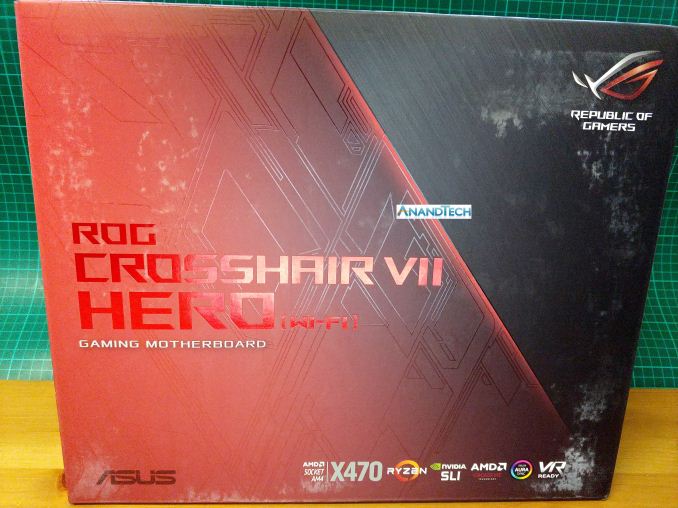

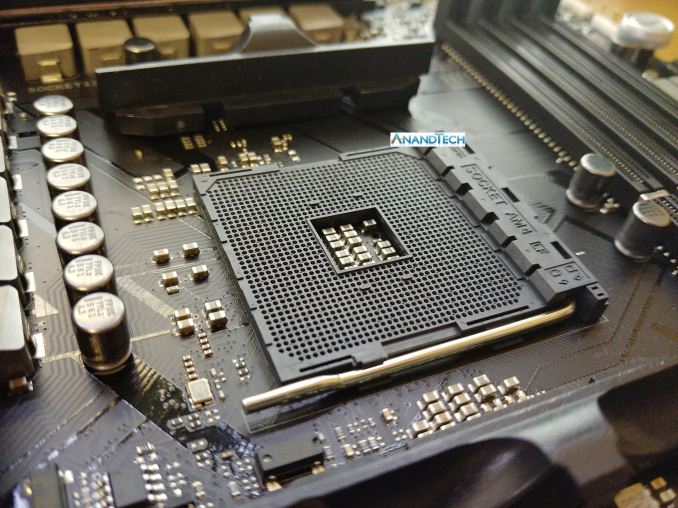
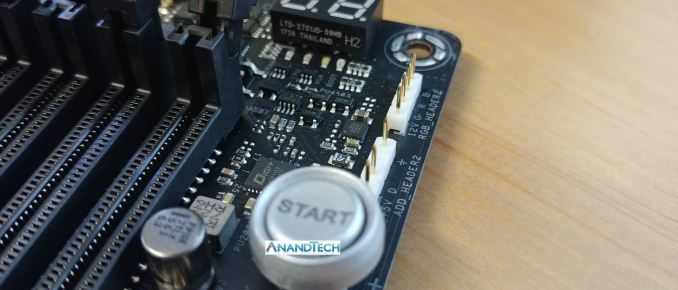

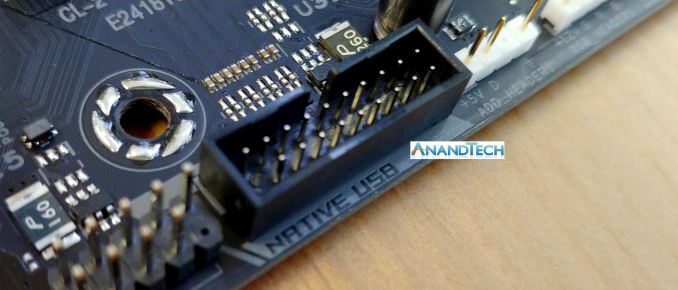
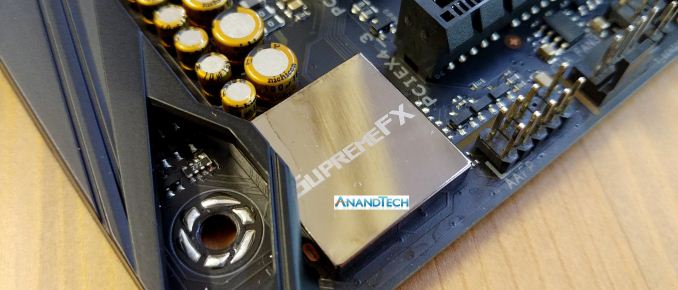
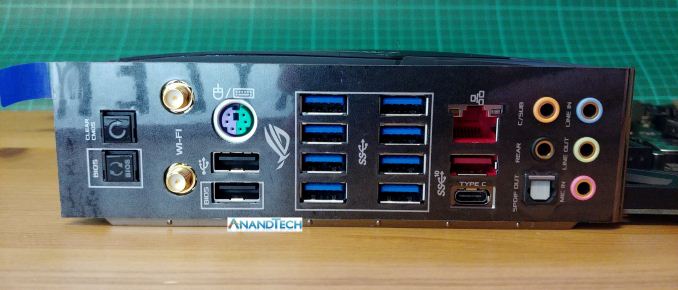






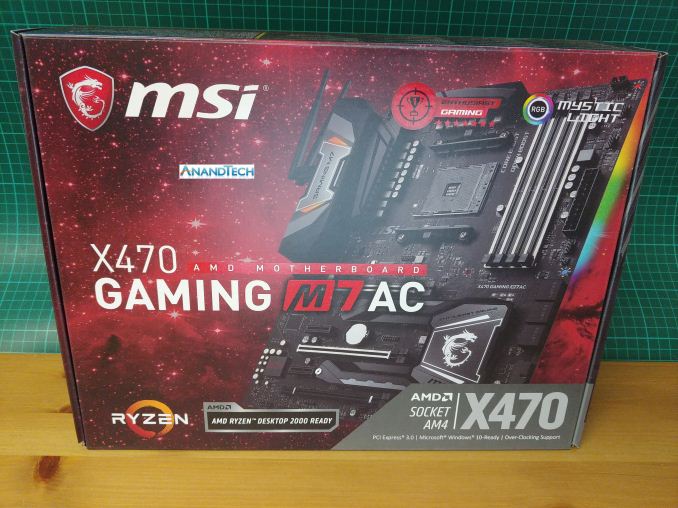
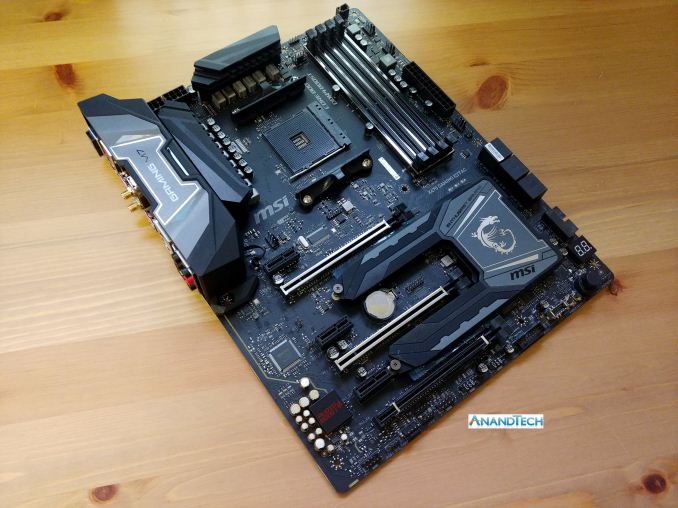
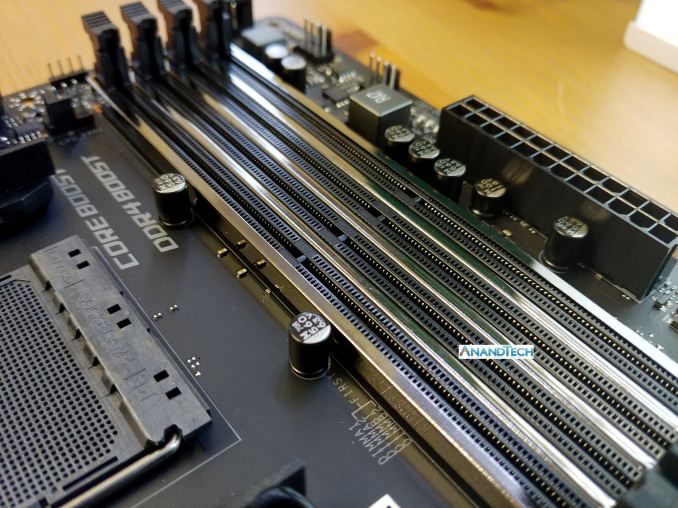
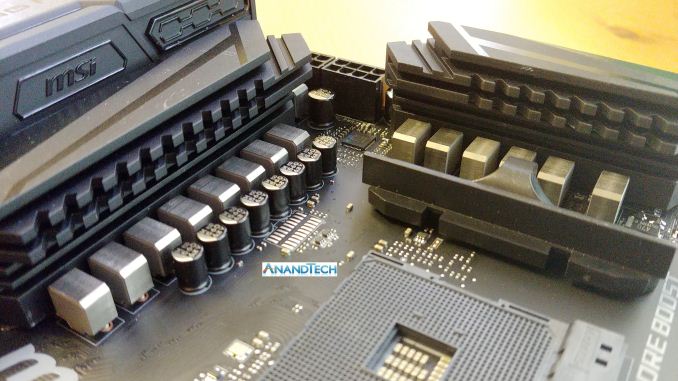

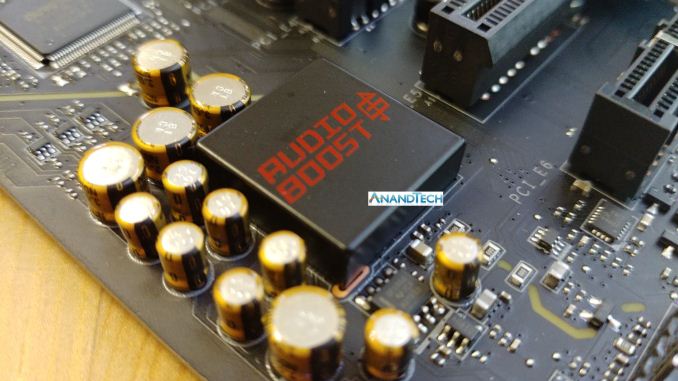
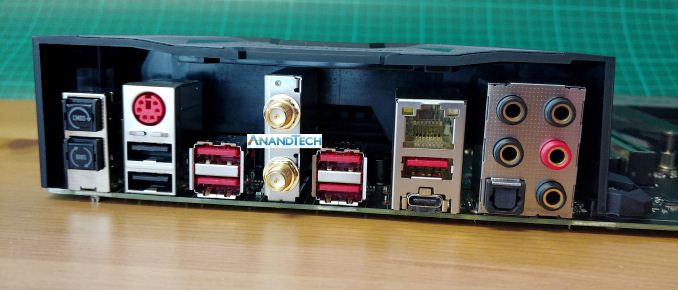
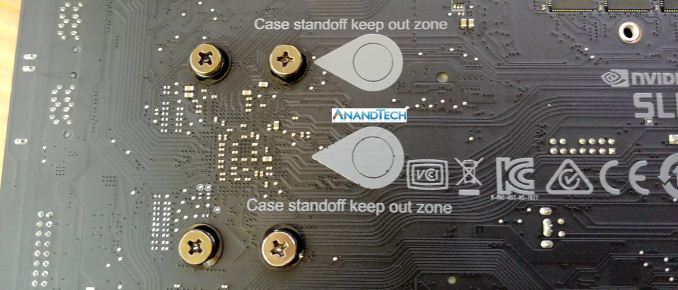
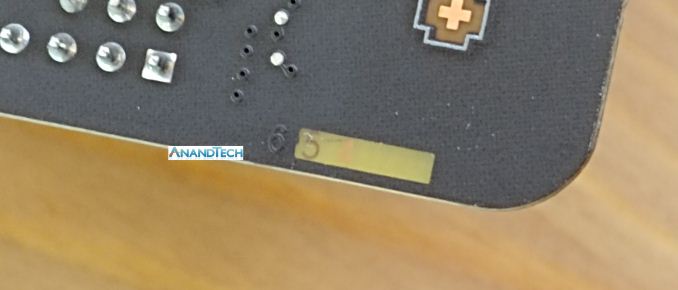














545 Comments
View All Comments
MDD1963 - Friday, April 20, 2018 - link
The Gskill 32 GB kit (2 x 16 GB/3200 MHz) I bought 13 months ago for $205 is now $400-ish...andychow - Friday, April 20, 2018 - link
Ridiculous comment. 7 years ago I bought 4x8 GB of RAM for $110. That same kit, from the same company, seven years later, now sells for $300. 4x16GB kits are around $800. Memory prices aren't at all the way they've always been. There is clear collusion going on. Micron and SK Hynix have both seen their stock price increase 400% in the last two years. 400%!!!!!The price of RAM just keeps increasing and increasing, and the 3 manufacturers are in no hurry to increase supply. They are even responsible for the lack of GPUs, because they are the bottleneck.
spdragoo - Friday, April 20, 2018 - link
You mean a price history like this?https://camelcamelcamel.com/Corsair-Vengeance-4x8G...
Or perhaps, as mentioned here (https://www.techpowerup.com/forums/threads/what-ha... how the previous-generation RAM tends to go up in price once the manufacturers switch to the next-gen?
Since I KNOW you're not going to claim that you bought DDR4 RAM 7 YEARS AGO (when it barely came out 4 years ago)...
Alexvrb - Friday, April 20, 2018 - link
I love how you ignored everyone that already smushed your talking points to focus on a post which was likely just poorly worded.RAM prices have traditionally gone DOWN over time for the same capacity, as density improves. But recently the limited supply has completely blown up the normal price-per-capacity-over-time curve. Profit margins are massive. Saying this is "the same as always" is beyond comprehension. If it wasn't for your reply I would have sworn you were simply trolling.
Anyway this is what a lack of genuine competition looks like. NAND market isn't nearly as bad but there's supply problems there too.
vext - Friday, April 20, 2018 - link
True. When prices double with no explanation, there must be collusion.The same thing has happened with videocards. I have great doubts about bitcoin mining as a driver for those price increases. If mining was so profitable, you would think there would be a mad scramble to design cards specifically for mining. Instead the load falls on the DYI consumer.
Something very odd is happening.
Alexvrb - Friday, April 20, 2018 - link
They DO design things specifically for mining. It's called an ASIC miner. Unfortunately for us, some currencies are ASIC-resistant, and in some cases they can potentially change the algorithm, which makes such (expensive!) development challenging.Samus - Friday, April 20, 2018 - link
Yep. I went with 16GB in 2013-2014 just because I was like meh what difference does $50-$60 make when building a $1000+ PC. These days I do a double take when choosing between 8GB and 16GB for PC's I build. Even hardcore gaming PC's don't *NEED* more than 8GB, so it's worth saving $100+Memory prices have nearly doubled in the last 5 years. Sure there is cheap ram, there always has been. But a kit of quality Gskill costs twice as much as a comparable kit of quality Gskill cost in 2012.
FireSnake - Thursday, April 19, 2018 - link
Awesome, as always. Happy reading! :)Chris113q - Thursday, April 19, 2018 - link
Your gaming benchmarks results are garbage and every other reviewer got different results than you did. I hope no one takes this review seriously as the data is simply incorrect and misleading.Ian Cutress - Thursday, April 19, 2018 - link
Always glad to see you offer links to show the differences.We ran our tests on a fresh version of RS3 + April Security Updates + Meltdown/Spectre patches using our standard testing implementation.